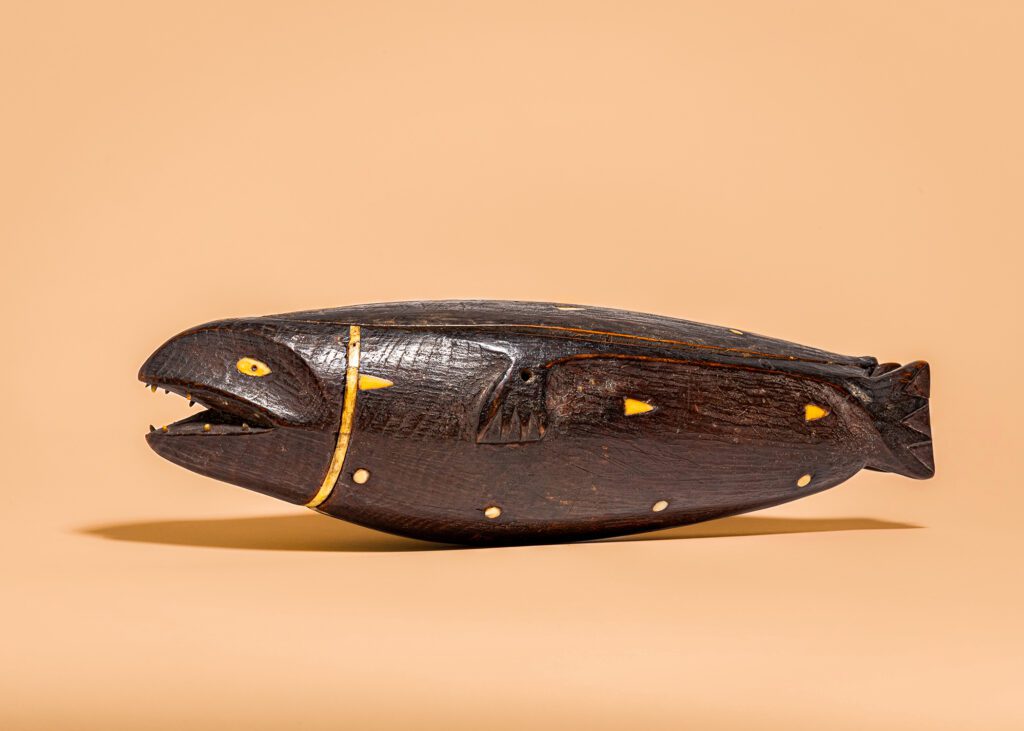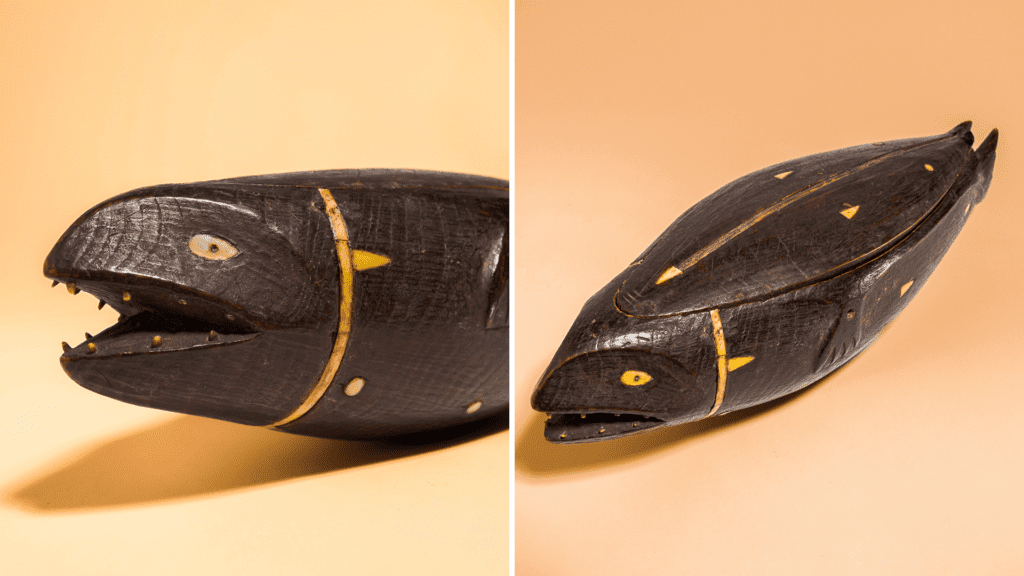
November is American Indian and Alaska Native Heritage Month and we’re highlighting a unique object in our collection from an indigenous maker. A Native American carver of the Yup’ik (or Cup’ik) culture created this small, lidded box and the visual evidence inside indicates it served its owner for a long period of time. Animal form boxes (“yaassiik”) had many possible uses, including holding harpoon heads and fishing tools, mineral pigments, arrow points, mask parts, and other small items. The maker sculpted a transformative shape, a seal with the concave cheeks of a fish head, with flippers carved in low relief on either side and vertical tail flukes carved in the round.

The animal’s facial features are accented with inlayed elements, including horn and the ivory teeth of a small mammal in the open mouth. The conforming, curved lid rests on the opening of the hollowed-out interior cavity forming the box. It may have once been fastened by a sinew or tie. A set of three short lines carved on the top of the lid near one end is possibly a symbol used by the box’s owner’s. The later English inscription on the underside was likely added by a Euro-American collector or antiques dealer.
Box (Animal)
Yup’ik or Cup’ik Artist (Maker)
Alaska, United States, North America; 1850-1900
Wood; Ivory (tooth); Bone; Horn; Paint
Bequest of Henry Francis du Pont 1965.1840 A, B